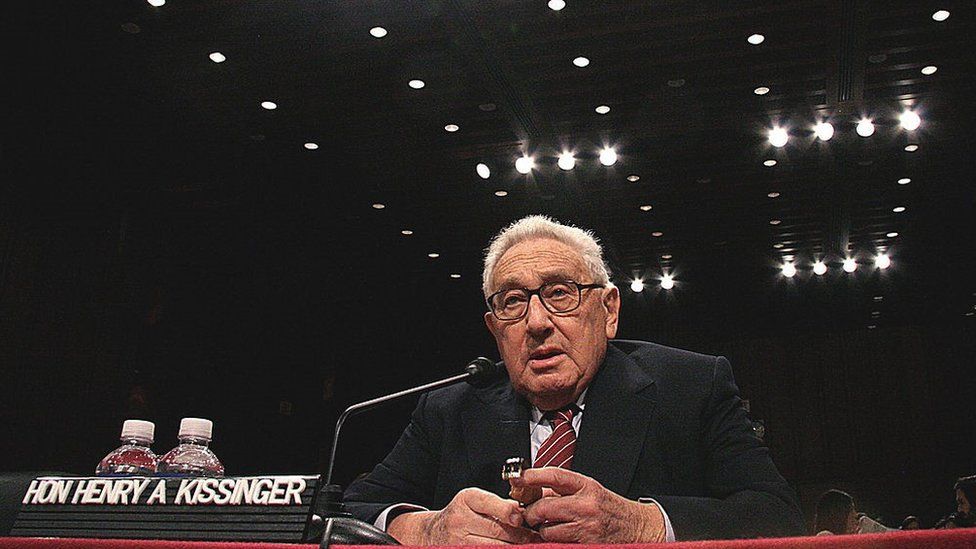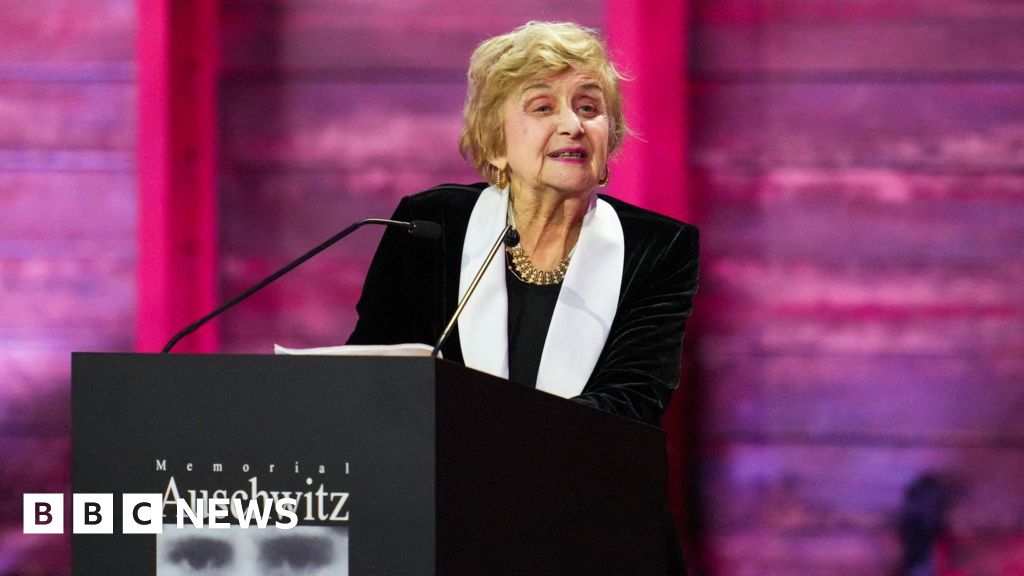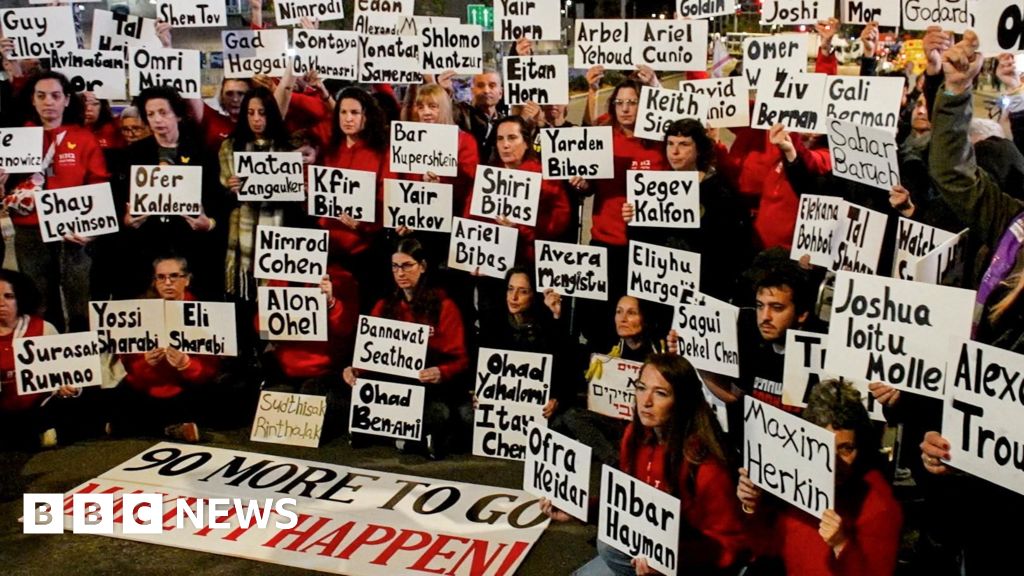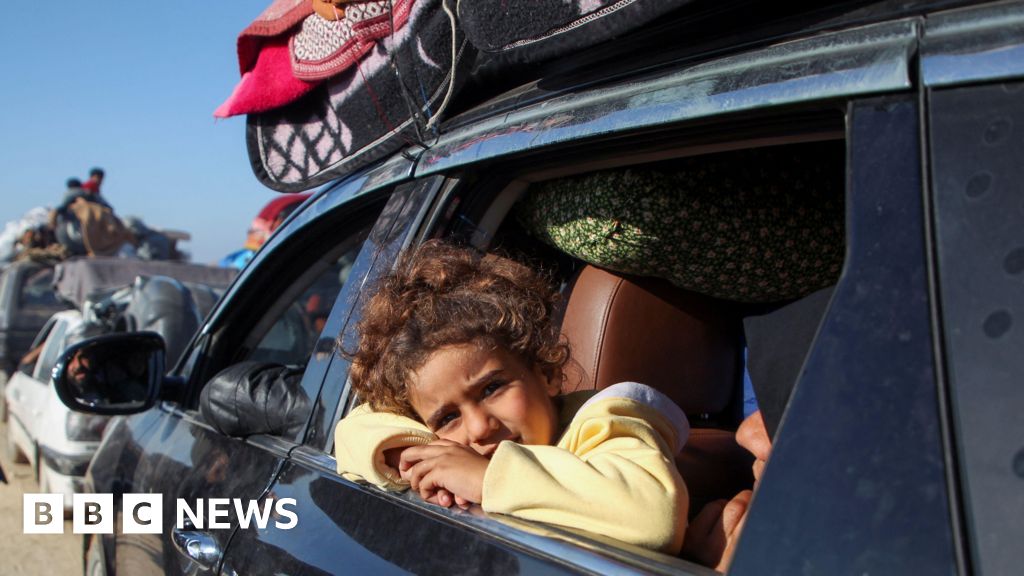ARTICLE AD BOX
 Image source, Getty Images
Image source, Getty Images
Henry Kissinger died this week at the age of 100
By Ouch Sony & George Wright
BBC News, Phnom Penh and London
When news of Henry Kissinger's death spread this week, many former world leaders lined up to pay tribute.
Former US President George W Bush said the US had "lost one of the most dependable and distinctive voices on foreign affairs".
Former UK Prime Minister Tony Blair described the ex-US secretary of state as an artist of diplomacy, who was motivated by "a genuine love of the free world and the need to protect it". Boris Johnson called Kissinger "a giant of diplomacy and strategy - and peace-making".
But peacemaker is not a term you're likely to hear many in Cambodia use when describing Henry Kissinger.
During the Vietnam War, Kissinger and then-President Richard Nixon ordered clandestine bombing raids on neutral Cambodia, in an effort to flush out Viet Cong forces in the east of country.
Altogether, the US dropped more than 2 million tons of bombs on Cambodia. For context, the Allies dropped just over 2 million tons of bombs during the whole of World War II, including the bombs that struck Hiroshima and Nagasaki.
Kissinger maintained that the bombing was aimed at the Vietnamese army inside Cambodia, not at the country itself.
Vorng Chhut recalls people being killed by the US bombing
Vorng Chhut, 76, had never heard the name Henry Kissinger when bombs started dropping down on his village in Svay Rieng province, near the Vietnamese border.
"Nothing was left, not even the bamboo trees. People escaped, while those who stayed in the village died," he said. "A lot of people died, I can't count all their names. The bodies were swollen and when it became quiet, people would come and bury the bodies."
A 2006 Yale University report, Bombs Over Cambodia, stated that "Cambodia may be the most heavily bombed country in history".
A Pentagon report released in 1973 stated that "Kissinger approved each of the 3,875 Cambodia bombing raids in 1969 and 1970" as well as "the methods for keeping them out of the newspapers".
"It's an order, it's to be done. Anything that flies, on anything that moves. You got that?" Kissinger told a deputy in 1970, according to declassified transcripts of his telephone conversations.
The number of people killed by those bombs is not known, but estimates range from 50,000 to upwards of 150,000.
Image source, Roland Neveu/Getty Images
Image caption,The US dropped more than 2 million tons of bombs on Cambodia
One of the most notorious incidents was the accidental bombing of the small town of Neak Luong, where at least 137 Cambodians were killed and another 268 were wounded.
A New York Times report by Sydney Schanberg, who was later portrayed in the film the Killing Fields, quoted a man called Keo Chan, whose wife and 10 children had just been killed.
"All my family is dead!" he cried, beating his hand on the wooden bench where he had collapsed. "All my family is dead! Take my picture, take my picture! Let the Americans see me!"
Another man stood near an unexploded bomb in the town asked simply: "When are you Americans going to take it away?"
Unexploded American bombs littered the Cambodian countryside, maiming and killing people for decades to come.
Many also say that another consequence of Nixon and Kissinger's bombing campaign was that it helped pave the way for one of the worst genocides of the 20th century. Around 1.7 million people died at the hands of the Pol Pot-led Khmer Rouge between 1975 and 1979 - almost a quarter of the population.
Image source, Omar Havana/Getty Images
Image caption,An estimated 1.7 million died under Khmer Rouge rule
Prior to that, the ultra-communists had little support, but its ranks grew as American bombs fell.
The CIA's director of operations reported in 1973 the Khmer Rouge forces were successfully "using damage by B-52 strikes as the main theme of their propaganda".
In 2009, the first Khmer Rouge official to be tried for crimes committed under the regime's reign of terror told the UN-backed court: "Mr Richard Nixon and Kissinger allowed the Khmer Rouge to grasp golden opportunities."
Kissinger always pushed back on criticism regarding the bombing of Cambodia.
"I just wanted to make clear that it was not a bombing of Cambodia, but it was a bombing of North Vietnamese in Cambodia," he said in 1973.
When he was 90, he claimed bombs were only dropped on areas "within five miles of the Vietnamese border that were essentially unpopulated".
Image source, Getty Images
Image caption,Richard Nixon, seen here pointing at a map of Cambodia, and Kissinger ordered clandestine bombing raids on Cambodia
Elizabeth Becker, an American journalist who covered the bombing campaign in 1973, said this was not the case.
"First you interviewed the refugees as they were coming away from the bombing, then you'd go to the bombing and there were moonscapes - you'd see the corpses of buffalo, you'd see houses burned, the rice fields gutted," she told the BBC.
"You saw the destruction and you thought: why was this modern air force bombing the countryside so much? In those days the farmers of Cambodia weren't even used to seeing motor vehicles, they routinely said to me: 'Why is fire falling from the sky?'"
Pen Yai, 78, cooperated with the Viet Cong inside Cambodia before the bombing started, but said large numbers of civilians were killed by American bombs, including his father and brother-in-law.
"I was so scared and could not sleep. People died everywhere. We just ran and recognised people who had been killed... we could not do anything," he said.
Many world leaders have praised Kissinger, who shared the 1973 Nobel peace prize for his role in negotiating an end to the Vietnam war and was later handed the Presidential Medal of Freedom - America's highest civilian award.
Prum Hen says she is still angry at the US to this day
But few who were in Cambodia in the 1970s will remember his legacy fondly.
Prum Hen, 70, was forced to flee her village when American bombs started raining down. She said she knew little about Kissinger and felt little sympathy when informed of his death.
"Let him die because he killed a lot of our people," she said, adding that she still feels deep resentment towards the US.
"They bombed our country, killing a lot of people and separating people from their children. Later on, the Khmer Rouge killed husbands, wives and children."
Ms Becker said the gravity of Kissinger's policies in Cambodia cannot be understated.
"To say the bombing was imprecise... it was inhumane. It's not just the number of people, it's the legacy.
"You cannot exaggerate what it did to the country."

 1 year ago
20
1 year ago
20








 English (US) ·
English (US) ·